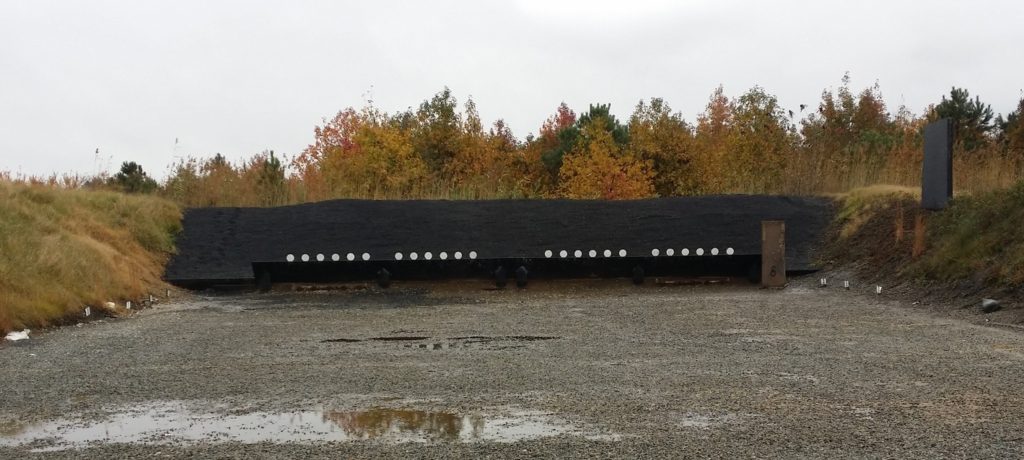In the case of an outdoor range, noise is definitely an issue. Safety is an important concern as well. It’s important to take the time to review all public ordinances that pertain to your property regarding outdoor shooting before investing any time in design, and follow all regulations. Common restrictions found in municipal ordinances include time limits and restrictions on days of use; minimum construction standards for safety; setback distances from neighboring properties and property lines; and restrictions on caliber size.
Length
While length is not more important than safety for your new range, it does have to be determined before you can develop your safe construction design. And to determine length, you have to have an idea of what type of firearm you will be using.
Handgun ranges typically go from 5 yards (25 feet) to 25 yards (75 feet). For personal protection practice, most experts agree that the key range for incidents is under 5 yards and recommend regular target practice in the 7-15 foot range. Some sports-shooting competition practices go up to 50 yards for handgun range, with large-caliber firearms. 25 yards is usually suitable for any airgun equipment as well, and 50 yards is usually the average for small-bore rifles and shotgun.
Rifles over .22 caliber usually require a minimum of 100 yards for practical use. An average commercial rifle range is usually about 300-500 yards, with the standard military rifle range being at least 550 yards, and sport-shooting ranges being anywhere from 300-2,000 yards for particular events.
Safety of users and surrounding properties is a key component in shooting range design. Safety is compromised of seeing and stopping.
Safety
You need to be able to clearly see down the range to your target, with no obstructions to deflect shots from the designed target area. You’ll also want to design clear sight-paths around the shooting range to be sure any approaching visitors are spotted in a timely manner, or restrict access range firing lanes so that no one can accidentally walk up on the live fire area.
And you’ll need to be able to erect effective barriers at all key points on the range to stop all ammunition in a safe manner. You can use STS rubber products as backstops. Placed behind the target area, our rubber acts as a solid backstop to capture rounds that go through or past the target. Side berms perpendicular to the backstop or external to the defined shooting lanes help manage wild release and ricochet rounds.
Side berms require regular review and maintenance. Erosion can lower berm height and high usage can cause the berm to fill with shot-scrap, which will cause ricochet rather than round absorption.

